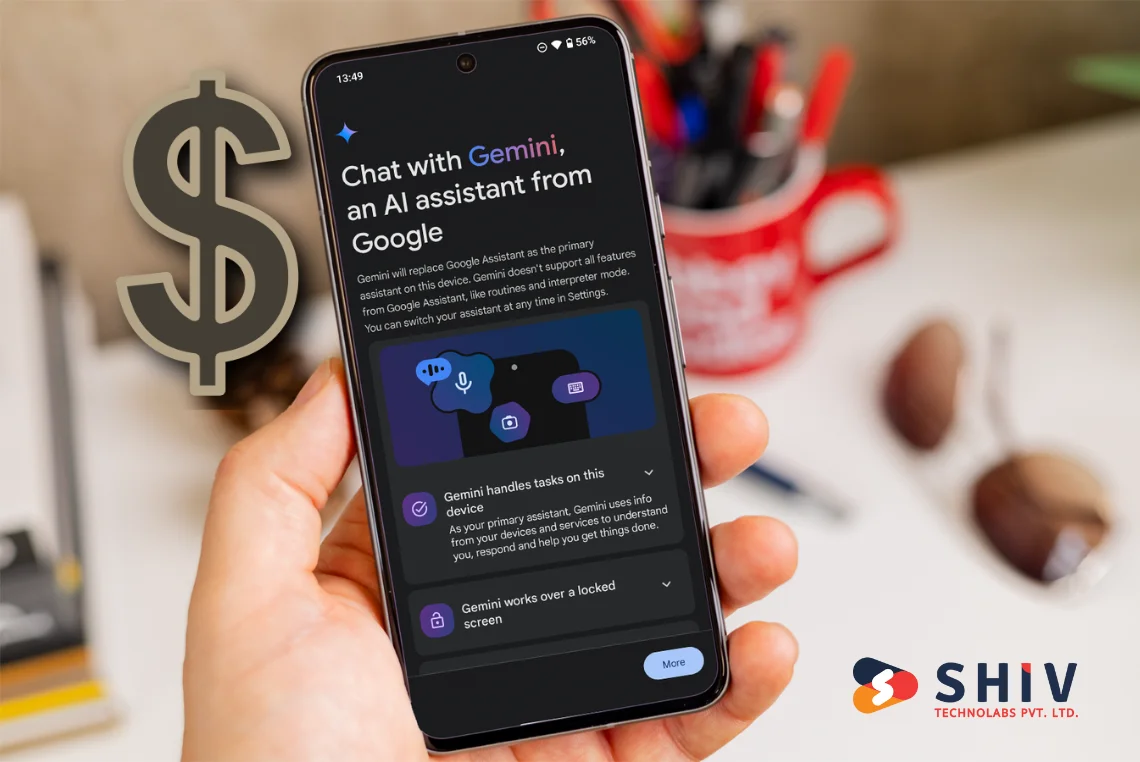Table of Contents
The integration of artificial intelligence (AI) into supply chains has brought about a significant transformation in how businesses operate and scale. With AI, companies can automate complex processes, predict demand, optimize logistics, and streamline operations. This detailed exploration will highlight how AI technologies enable supply chain efficiency, the specific areas where automation brings value, and the technological components making this shift possible.
AI-Driven Demand Forecasting

One of the primary ways AI contributes to supply chain automation is through enhanced demand forecasting. Traditional forecasting methods often rely on historical data without accounting for real-time market fluctuations, making predictions inaccurate. AI, powered by machine learning models, analyzes large datasets, including real-time market signals, consumer behavior patterns, and external factors like geopolitical events or weather conditions, to generate more accurate forecasts.
# Machine Learning Models for Forecasting
Supervised learning models such as regression models, decision trees, and neural networks are often employed to predict future demand based on historical sales data. AI-based forecasting tools can adapt to changing patterns and learn from new data, ensuring more accurate predictions over time.
Example: A retail company implementing AI-driven demand forecasting can predict seasonal spikes in product sales more accurately by considering external factors like weather trends, special holidays, and market conditions, reducing stockouts and overstock situations.
Predictive Maintenance in Supply Chain Infrastructure
Another area where AI has proven crucial is predictive maintenance. For industries that rely on heavy machinery and equipment in their supply chain processes, unplanned downtime can result in significant losses. AI-driven predictive maintenance monitors equipment performance in real-time and predicts when machinery might fail, allowing businesses to schedule maintenance proactively.
# Implementing AI for Predictive Maintenance
Predictive maintenance utilizes AI models to process sensor data collected from machines. These models predict the likelihood of machine failure, enabling supply chain operators to schedule timely repairs. This reduces unplanned downtime, improves operational efficiency, and reduces maintenance costs.
Example: In the manufacturing industry, companies have implemented AI-driven predictive maintenance in conveyor systems and robotic arms to identify when parts need to be serviced. This prevents breakdowns, reducing the chances of costly delays.
AI in Inventory Management and Optimization

Inventory management has long been a complex task involving balancing the supply and demand of goods. Overstocking ties up working capital, while understocking can result in lost sales and dissatisfied customers. AI algorithms are playing a critical role in fine-tuning inventory management practices, particularly through real-time analysis and decision-making.
# Automated Inventory Replenishment Systems
AI systems track product inventory levels and automatically place orders when stocks are predicted to run low. These systems account for multiple factors, such as lead times from suppliers, current sales trends, and anticipated demand, ensuring that inventory is replenished just in time without human intervention.
Example: A warehouse using AI-based inventory management can automatically adjust orders for specific goods based on real-time demand trends and supplier performance, minimizing manual errors and improving stock availability.
Route Optimization in Logistics
The logistics segment of the supply chain greatly benefits from AI in route planning and optimization. Traditional route planning methods often fail to consider the dynamic conditions on the road, leading to delays and higher fuel costs. AI-based solutions continuously monitor traffic, weather, and road conditions to provide real-time optimized routes.
# AI-Powered Route Optimization Algorithms
AI algorithms like reinforcement learning are often used to optimize delivery routes. These algorithms consider various constraints, such as delivery time windows, vehicle capacity, and traffic conditions, to identify the most efficient routes. These systems continuously learn from real-time data and adapt routes accordingly, improving delivery times and reducing operational costs.
Example: A logistics company can use AI-driven route optimization to plan delivery routes that minimize fuel consumption and avoid delays, ensuring timely delivery to customers while cutting transportation costs.
AI and Robotics in Warehouse Automation
Warehouses have been revolutionized by the introduction of AI-powered robotics. Robots powered by AI are now responsible for picking, packing, and sorting goods, reducing reliance on manual labor while increasing speed and accuracy.
# AI-Powered Robotic Systems
Automated guided vehicles (AGVs) and autonomous mobile robots (AMRs) equipped with AI systems are used to transport goods around warehouses. AI helps these robots navigate through dynamic environments, avoid obstacles, and find the quickest paths to their destinations. In addition, machine learning algorithms improve these robots’ performance over time, reducing the need for human intervention in warehouse processes.
Example: A fulfillment center uses AI-powered robots to pick items from shelves and deliver them to packing stations. By using AI for task allocation and navigation, the robots optimize their movements to complete tasks more efficiently.
AI-Enhanced Supplier Relationship Management
Supplier management is another critical area in the supply chain where AI is making a difference. AI can analyze vast amounts of data from suppliers, including performance history, lead times, and quality metrics, allowing businesses to make better decisions when selecting and managing suppliers.
# AI-Powered Supplier Performance Analysis
AI tools can evaluate supplier performance in real-time by analyzing data points such as delivery times, defect rates, and compliance with contractual obligations. This enables businesses to flag underperforming suppliers and identify high-performing ones, streamlining procurement processes.
Example: A manufacturing company uses AI to assess the reliability of its raw material suppliers, ensuring that it partners with those who deliver on time and meet quality standards, reducing production delays and defects.
AI in Supply Chain Risk Management
Managing risk is an integral part of supply chain management. Risks can arise from various sources, including natural disasters, economic instability, and market shifts. AI enables supply chain managers to anticipate and mitigate risks by analyzing risk factors in real time and providing actionable insights.
# Predictive Analytics for Risk Assessment
AI systems leverage predictive analytics to assess potential risks and disruptions to the supply chain. Machine learning models trained on historical data can predict events like supplier failures, geopolitical changes, or weather disruptions. By identifying these risks in advance, companies can take preventive measures to minimize the impact.
Example: A global logistics company uses AI-driven predictive analytics to monitor geopolitical instability in regions where its suppliers operate, allowing it to shift sourcing operations before disruptions occur.
AI for Supply Chain Sustainability
Sustainability has become a focal point in supply chain management, and AI is playing a pivotal role in promoting eco-friendly practices. AI-driven systems optimize resource usage, reduce waste, and lower carbon emissions by analyzing energy consumption and production data in real-time.
# AI for Environmental Impact Monitoring
AI helps companies monitor the environmental impact of their supply chains by tracking emissions, waste, and energy consumption across various stages of production and logistics. These insights enable businesses to implement more sustainable practices without sacrificing operational efficiency.
Example: A beverage company uses AI to analyze its water and energy consumption across its supply chain, reducing waste by identifying areas where resources can be conserved or reused.
AI-Powered Supplier Collaboration Platforms
AI is facilitating better collaboration between suppliers and businesses through supplier collaboration platforms. These platforms allow real-time communication and data sharing between parties, helping businesses and suppliers make data-driven decisions that improve the supply chain’s overall efficiency.
# AI-Enhanced Communication Channels
AI enhances communication between businesses and suppliers by analyzing real-time data and facilitating instant collaboration through cloud-based platforms. These platforms are designed to automatically handle tasks such as order management, shipment tracking, and invoice reconciliation, all of which contribute to reducing friction in the supply chain.
Example: An electronics manufacturer uses an AI-enhanced collaboration platform to track component shipments in real-time and communicate instantly with suppliers about production schedules, leading to faster resolution of potential issues.
AI in Customer Demand Sensing
AI can help businesses better understand their customers’ needs through demand sensing. By analyzing customer behavior data, social media trends, and market dynamics, AI systems can sense shifts in demand even before they become apparent in sales numbers.
# Real-Time Demand Sensing Systems
AI systems collect and analyze data from various sources, such as online behavior, social media, and economic indicators, to identify emerging trends and shifts in consumer preferences. These insights allow businesses to adjust their supply chains dynamically, improving their ability to meet customer demand.
Example: A fashion retailer uses AI to detect shifts in consumer preferences for certain styles by analyzing online search patterns and social media activity. The system automatically adjusts inventory levels and production schedules to meet the anticipated demand.
AI’s role in automating supply chains has proven transformative, offering businesses the tools to handle complex tasks, predict challenges, and operate more efficiently at scale. With AI, businesses can reduce operational costs, improve decision-making accuracy, and respond dynamically to market changes, all of which contribute to greater overall efficiency in the supply chain. The growing integration of AI into supply chain operations is reshaping industries, enabling them to stay competitive in an increasingly demanding global market.
To stay ahead in today’s competitive market, businesses in Saudi Arabia need cutting-edge technology to streamline their supply chain operations. At Shiv Technolabs, a leading AI/ML development company in Saudi Arabia, we provide advanced AI/ML development services in Saudi Arabia to help you automate processes, improve efficiency, and make data-driven decisions. Let us assist you in transforming your supply chain with innovative AI solutions tailored to your specific needs.




















